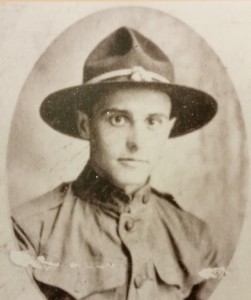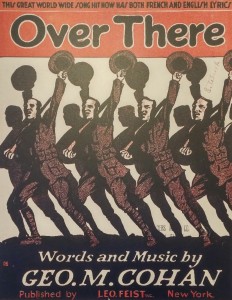 “From Ottawa to ‘Over There’: Franklin County Goes to War” follows the story of the local men as they prepare for duty, serve in a gruesome battle in France, and—for those who survived— return home.
“From Ottawa to ‘Over There’: Franklin County Goes to War” follows the story of the local men as they prepare for duty, serve in a gruesome battle in France, and—for those who survived— return home.
By 1917, war had been raging in Europe for three long and bloody years. As German aggression grew and U.S. interests were threatened, a call for American men to serve in The Great War for Civilization grew louder.
Months before the United States instituted the draft, the Kansas National Guard recruited heavily in Franklin County. Posters proclaiming “Young men, we need you!” and “The government is calling for MEN! Are you a man?” encouraged young Franklin Countians to march into the local headquarters housed at 219 South Main Street and enlist in the KNG. When American soldiers began to mobilize on August 5, 1917, nearly 10,000 Kansans left for duty.

Most Franklin County men who went to war in France served in the 1st Kansas National Guard, Company K. They were incorporated into the 137th Infantry Regiment, Twelfth Division, which was sent into the Battle of the Meuse-Argonne on September 26, 1917. During what would be the greatest American battle of World War I, 26,777 Americans were killed and 95,786 were wounded. Some of those losses were from Franklin County.
Those who returned were celebrated with parades and offered a headquarters for the newly formed Warren C. Black American Legion Post #60 in the newly constructed Memorial Auditorium. The 46 Franklin County men who died in service are honored on a plaque, which still hangs today in the lobby of the building now known as Ottawa Municipal Auditorium.
The exhibit features images and artifacts from World War I. Photographs of soldiers that once adorned the walls of Memorial Auditorium show men from a variety of backgrounds who were all called to serve. Liberty posters, famous sheet music covers, maps, soldier’s uniforms and helmets, and a stretcher that carried the dead and wounded off the field capture what life was like for both the soldiers and the families they left behind.

Children are also invited to try on authentic WWI tunics and helmets from the FCHS’ educational collection. By 1917, the average soldier carried between 70 and 90 lbs in clothing and equipment, and the small uniform tunics attest to the slight stature of many of the men who served.
In addition, this exhibit includes a research room, which features photographs, newspaper articles, and obituaries from the Franklin County Historical Society archives, and the public is invited to search through these materials for links to their own family histories. Digital copies of family photos located among the hundreds of images of National Guard and World War I soldiers may be obtained.
This exhibit was on display May 2015 through July 2015.
